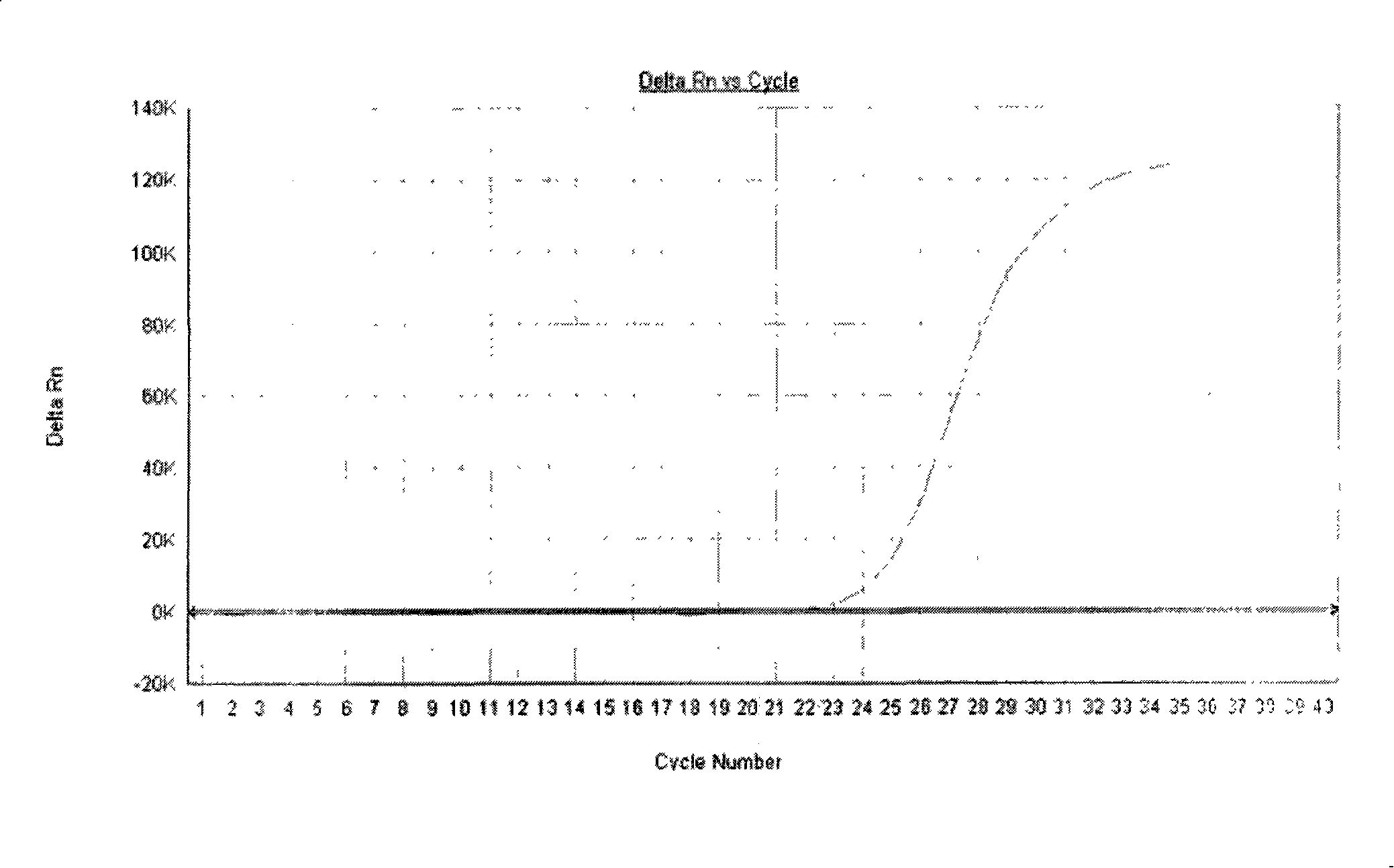Primer and probe sequence for detecting dengue virus 3 nucleotides fragment
A dengue virus and primer sequence technology, applied in biochemical equipment and methods, DNA/RNA fragments, microbial determination/inspection, etc., can solve problems such as low sensitivity, time-consuming experiments, cumbersome operations, etc.
- Summary
- Abstract
- Description
- Claims
- Application Information
AI Technical Summary
Problems solved by technology
Method used
Image
Examples
Embodiment Construction
[0011] 1. Design of primers and probes: Through comparative analysis of all known dengue virus type III genome sequences, select a segment with no secondary structure and a high degree of conservation, and design multiple pairs of primers and probes. The length of the primers is generally About 20 bases, there is no complementary sequence between the primers and within the primers. The optimal primer and probe sequence combinations are as follows:
[0012] Upstream primer DenIIIpf: GGAAAACCGTCTATCAATATGCTG
[0013] Downstream primer DenIIIpr: TCCTCTTGAGAATCTCTTCGCC
[0014] Probe DenIIIpb: CGCGTGAGAAACCGTGTGTCAACTG
[0015] 2. Establishment and optimization of the reaction system: use the inactivated dengue virus type III as the sample to be tested, use the extraction method of TriIIIzol nucleic acid extraction reagent to extract the viral genome RNA, and store it at -20°C for later use.
[0016] 2.1 Optimization of primer concentration In the case of the same other conditi...
PUM
 Login to View More
Login to View More Abstract
Description
Claims
Application Information
 Login to View More
Login to View More - R&D
- Intellectual Property
- Life Sciences
- Materials
- Tech Scout
- Unparalleled Data Quality
- Higher Quality Content
- 60% Fewer Hallucinations
Browse by: Latest US Patents, China's latest patents, Technical Efficacy Thesaurus, Application Domain, Technology Topic, Popular Technical Reports.
© 2025 PatSnap. All rights reserved.Legal|Privacy policy|Modern Slavery Act Transparency Statement|Sitemap|About US| Contact US: help@patsnap.com

